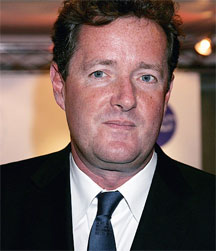LONDON, (Reuters) – One of Britain’s most respected journalists said today that former tabloid newspaper editor Piers Morgan showed him how to hack into phones 10 years ago, the latest twist in a scandal that has so far centred on Rupert Murdoch.

Morgan, now a CNN talk-show host in the United States, has consistently denied authorising phone hacking during his time as editor of the Daily Mirror.
The criminal practice has damaged Murdoch’s reputation, led to the closure of his News of the World newspaper and prompted a judicial inquiry into media standards.
Yesterdday, the BBC’s Jeremy Paxman told the inquiry that Morgan had boasted to him at a lunch in 2002 about how easy it was to access the voicemail messages of mobile phones.
“He turned to me and said: ‘Have you got a mobile phone?’ I said yes and he said: ‘Have you got a security setting on the message bit of it?’,” Paxman said.
“I didn’t know what he was talking about. He then explained that the way to get access to people’s messages was to go to the factory default setting and press either 0000 and 1234, and if you didn’t put your own code in, his words, ‘you are a fool’.”
Trinity Mirror, publisher of the Daily Mirror, has denied that any of its journalists hacked phones, but its shares fell sharply on Wednesday after Paxman’s appearance at the high-profile Leveson Inquiry. They closed down 5.5 percent.
Morgan, who edited Murdoch’s News of the World from 1994 to 1995 before editing the Daily Mirror from 1995 to 2004, was called to appear before the inquiry last year after his name became associated with the scandal.
He had written in his published diaries about a “little trick” for eavesdropping on voicemails that he had heard of as early as 2001.
Morgan told the inquiry in December that the boasts were merely a repetition of rumours about journalistic “dark arts”.









